I was an avid science reader while in school. I read about stars and atoms – and most things in-between. The books that I read and what I learned in school taught me that scientific knowledge had established evolution as a fact. Evolution proposes that all life today descended over long ages from a common ancestor. It did so through the process of natural selection operating on chance mutations. Evolution appealed to me since it made sense of so much of the world I saw and experienced around me.
Evolution Taught in Society
For example, it explained:
- Why there was such a wide variety of life forms, but still with many similarities between them. This proved descent from a common ancestor,
- Why we could see some changes in animals over a few generations. I learned how scientists observed populations of moths changing color, or bugs changing beak lengths, due to changes in the environment. Then there were the advancements in animal breeding. These were examples of small evolutionary steps.
- Why organisms, including humans, fought and struggled so hard with each other to survive. This showed the never-ending struggle for existence.
- Why sex seemed so important to animals and especially humans. This ensured that our species would produce enough offspring to survive and continue evolving.
Evolution explained human life – struggle, competition and lust. It fit with what we observe in the biological world – mutations, changing species, and similarities between species. Chance and natural selection operating on our common ancestor over millions of years resulting in the various descendants we see today made sense of this.
Textbooks mentioned transitional fossils as possible further scientific evidence for evolution. Transitional fossils showed how animals in the past linked to their evolved descendants through intermediate fossils. I had supposed that many such transitions existed, proving the sequence of our evolution down through the ages.

Fact: Lack of Transitional Fossils and Intermediate Life forms
I was quite surprised, as I looked closer, to discover that this was simply not the case. As a matter of fact, the lack of transitional fossils showing the textbook evolutionary path (single cell -> invertebrate -> fish -> amphibian -> reptile -> mammal -> primates -> man) directly contradicted evolution. For example, the evolution from single cell organisms to marine invertebrates (ex. starfish, jellyfish, trilobites, clams, sea lilies etc.) supposedly took 2 billion years. Think of the countless intermediates that must have existed if life evolved from bacteria to complex invertebrates by chance and natural selection. We should have found thousands of them preserved as fossils today. But what do the evolutionary experts say about these transitions?

Why should such complex organic forms [i.e., the invertebrates] be in rocks about six hundred million years old and be absent or unrecognized in the records of the preceding two billion years?
M. Kay and E.H. Colbert, Stratigraphy and Life History (1965), p. 102.
The fossil record is of little use in providing direct evidence of the pathways of descent of the invertebrate classes. … no phylum is connected to any other via intermediate fossil types.
J. Valentine, The Evolution of Complex Animals in What Darwin Began, L.R. Godfrey, Ed., Allyn & Bacon Inc. 1985 p. 263.
Thus, the actual evidence showed NO such evolutionary sequence culminating in the invertebrates. They just suddenly appear in the fossil record fully formed. And this supposedly involved two billion years of evolution!
Fish Evolution: No Transitional Fossils
We find this same absence of intermediate fossils in the supposed evolution from invertebrates to fish. Leading evolutionary scientists confirm this:
Between the Cambrian [invertebrates] … and when the first fossils of animals with really fishlike characters appeared, there is a gap of 100 million years which we will probably never be able to fill”
F.D. Ommanney, The Fishes (Life Nature Library, 1964, p.60)
All three subdivisions of the bony fishes appear in the fossil record at approximately the same time… How did they originate? What allowed them to diverge so widely? How did they come to have heavy armor? And why is there no trace of earlier intermediate forms?
G.T. Todd, American Zoologist 20(4):757 (1980)
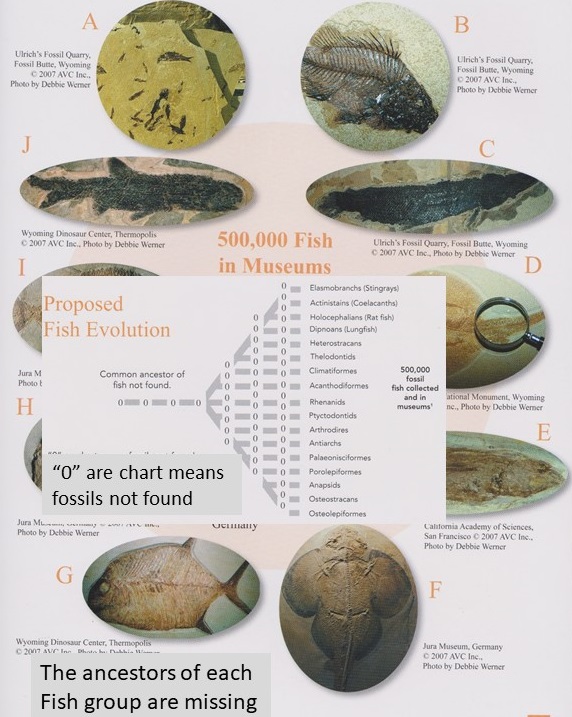
Plant Evolution: No Transitional Fossils
When we turn to see the fossil evidence supporting the evolution of plants we find again no fossil evidence:
The origin of the land plants is about as “lost in the mists of time” as anything can be, and the mystery has created a fertile arena for debate and conjecture
Price, Biological Evolution, 1996 p. 144
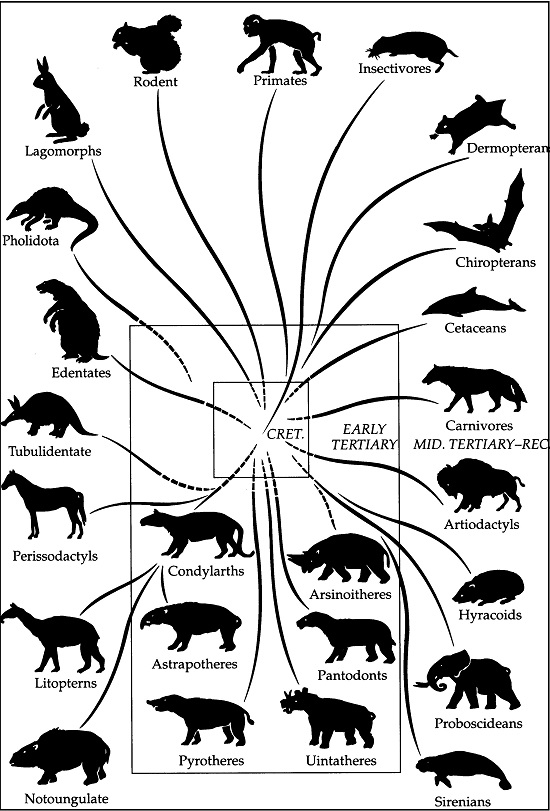
Mammal Evolution: No Transitional Fossils
Evolutionary tree diagrams shows this same problem. Take the evolution of mammals for example. Observe this textbook figure with no start, or transitional fossils connecting the major groups of mammals. They all appear with their characteristics complete.
No Transitional Fossils in the Museums
Scientists have searched exhaustively all over the world for over 150 years for the predicted transitional fossils.
[Darwin’s] ideas were presented in opposition to the theory of special creation, which predicts the instantaneous creation of new forms, … He … predicted that as specimen collections grew, the apparent gaps between fossil forms … would be filled in by forms showing gradual transitions between species. For a century thereafter, most paleontologists followed his lead.
Evolutionary Analysis by Scott Freeman & Jon Herron 2006. p. 704 (popular university text with later editions)
They have catalogued millions and millions in various museums.
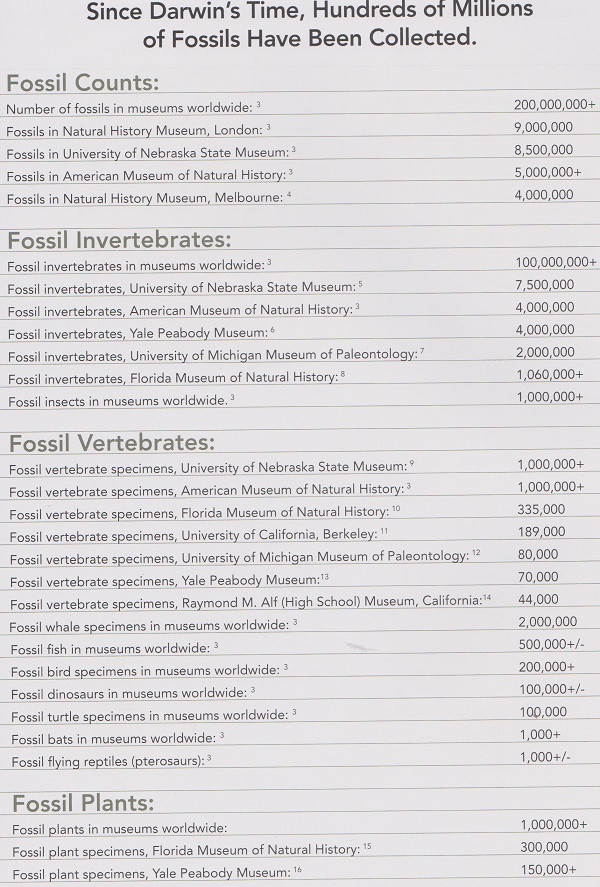
Though scientists have found millions of fossils worldwide, they have not found one undisputed transitional fossil. Notice how scientists at both the British and the American museums of Natural History summarize the fossil record:
The American Museum people are hard to contradict when they say there are no transitional fossils…You say that I should at least ‘show a photo of the fossil from which each type of organsim was derived’. I will lay it on the line — there is not one such fossil for which one could make a watertight argument”
Colin Patterson, Senior paleontologist at the British Museum of Natural History in a letter to L.D. Sunderland as quoted in Darwin’s Enigma by L.D. Sunderland, p. 89 1984
Since Darwin’s time the search for missing links in the fossil record has continued on an ever-increasing scale. So vast has been the expansion of paleontological activity over the past one hundred years that probably 99.9% of all paleontological work has been carried out since 1860. Only a small fraction of the hundred thousand or so fossil species known today were known to Darwin. But virtually all the new fossil species discovered since Darwin’s time have either been closely related to known forms or, .. strange unique types of unknown affinity.
Michael Denton. Evolution: A Theory in Crisis. 1985 p. 160-161
New Emerging Information never observed in Natural Selection
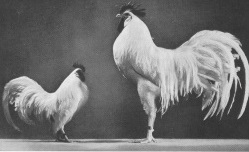
Then I realized that evolution’s explanatory power that I described earlier was not as impressive as I had first thought. For example, though we see changes in animals over time, these changes never show increasing complexity and new function. Thus, when the moth populations mentioned earlier change color, the level of complexity (gene information) remains the same. This is how human races arose. No novel structures, functions or information content (in the genetic code) are introduced. Natural Selection simply eliminates variations of existing information. Yet evolution requires change showing increase in complexity and new information. After all, this is the general trend that the evolutionary ‘trees’ portray. They show simpler life (like single-celled organisms) gradually evolving to more complex life (like birds and mammals).

Seeing objects moving horizontally (like billiards rolling on a pool table) is not the same as movement vertically up (like a rising elevator). Vertical movement requires energy. In the same way, variations in frequency among existing genes is not the same as developing new genes with new information and function. Extrapolating that increasing complexity can be inferred from observing change at the same level of complexity is not supported.
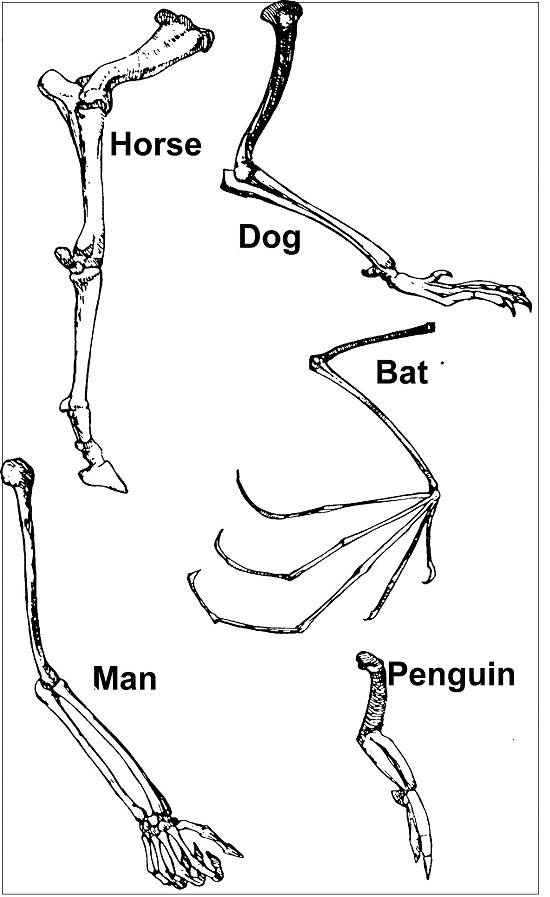
Biological Similarities Explained by Common Design
Finally, I realized that similarities between organisms allegedly proving the existence of a common evolutionary ancestor (called homology) could alternatively be interpreted as evidence of a common designer. After all, the reason that automobile models of a car company bear similarities in design with each other is because the models have the same design team behind them. Similarities between designed products is never because they are descended from a common ancestor, but planned by a common design team. Thus, the pentadactyl limbs in mammals could signal evidence of a designer using this basic limb design for all mammals.
Bird Lung: Irreducibly Complex Design
I have seen that as we continue to understand more about the biological world, the problems with evolution keep increasing. For evolution to be possible, small changes in function need to increase survival rates so that these changes can be selected and passed on. The problem is that many of these transitional changes will simply not work, let alone increase function. Take birds for example. They supposedly evolved from reptiles. Reptiles have a lung system, like mammals, by bringing air in-and-out of the lung to alveoli though bronchi tubes.
Birds however have a totally different lung structure. Air passes through the parabronchi of the lung in one direction only. These figures illustrate these two design plans.
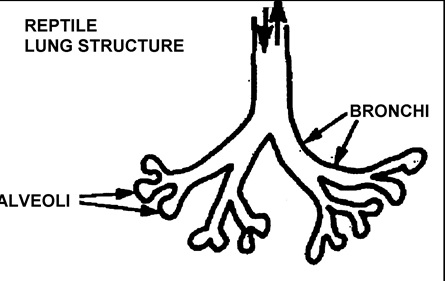
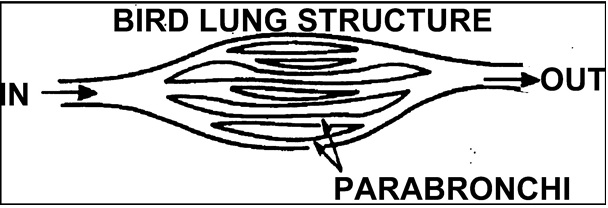
How is the hypothetical half-reptile and half-bird going to breathe while his lung rearranges (by chance modifications)? Can a lung even function while part-way between the bi-directional reptile structure and the uni-directional bird structure? Not only is being half-way between these two lung designs NOT better for survival, but the intermediate animal would not be able to breathe. The animal would die in minutes. Maybe that is why scientists have not found transitional fossils. It is simply impossible to function (and thus live) with a partially developed design.
What about Intelligent Design? It explains our Humanness
What I first saw as evidence supporting the theory of evolution, upon closer inspection, turned out to be unpersuasive. There is no direct observable evidence supporting the theory of evolution. It contradicts a surprising amount of scientific evidence and even common-sense. Essentially one needs faith, not fact, to adhere to evolution. But are there any alternative explanations for how life came to be?
Perhaps life is the product of an Intelligent Design?
There are also facets of human life that evolutionary theory never even attempts to explain. Why are people so aesthetic, instinctively turning to music, art, drama, stories, movies – none of which have any survival value – to refresh ourselves? Why do we have a built-in moral grammar that allows us to intuitively sense moral right and wrong? And why do we need purpose in our lives? These capabilities and needs are essential to being human, yet are not easily explained through evolution. But understanding ourselves as created in the image of God makes sense of these non-physical human traits. We begin exploring this idea of being created by Intelligent Design here.